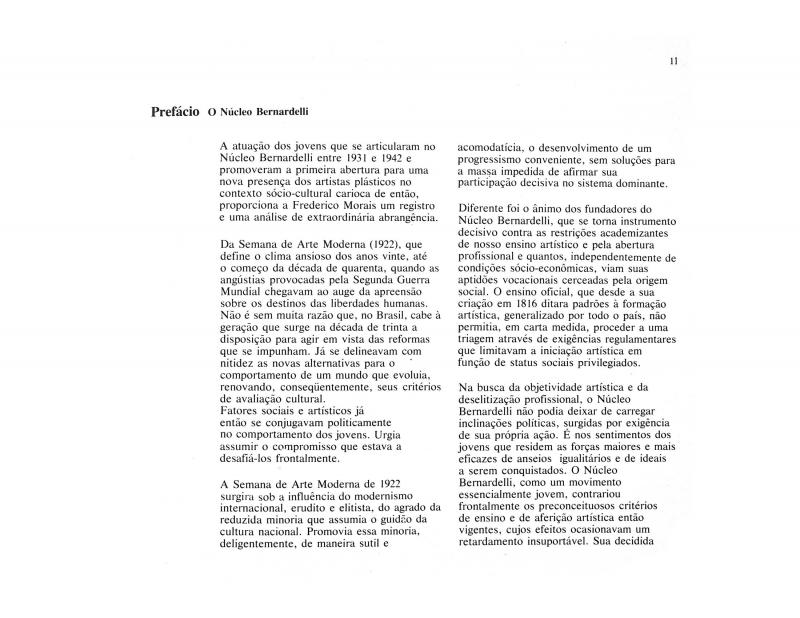In the fourth chapter of his book on the life and work of painter José Pancetti, Medeiros Lima formulates serious criticism of the Núcleo Bernardelli active in Rio de Janeiro from 1931 to 1942. According to the author, it was an initiative that “left no significant mark” on Brazilian modernism. It did, however, motivate its members—specifically Pancetti and Milton Dacosta—to go on to produce important pictorial works. In Medeiros Lima’s view, the Núcleo provided a context for the practice of those young people who did not form part of the longstanding elite of the Escola Nacional de Belas Artes. As Pancetti himself is cited as explaining, he joined the Núcleo “without any expectations at all.” In fact, he considered what he learned there “somewhat drab and annoying.”
If the São Paulo-based Grupo Santa Helena is the parameter, the Núcleo Bernardelli represented a lukewarm modernism in Brazil. Most of its members were young people from lower-middle-class backgrounds—some of them immigrants or children of immigrants—more interested in perfecting their painting technique than in undertaking formal innovations. In addition to Pancetti and Dacosta, the “nucleanos” included Quirino Campofiorito, Manoel Santiago, Edson Motta, João José Rescala, Aldo Malagoli, Bustamante Sá, Bráulio Poiava, Expedido Camargo Freire, Eugênio Sigaud, Bruno Lechowski, Yoshia Takaoka, Yuji Tamaki, Joaquim Tenreiro, and José Gómez Corrêia.
For further reading on this topic, see Campofiorito’s preface “O Núcleo Bernardelli” (doc. no. 1110419).

